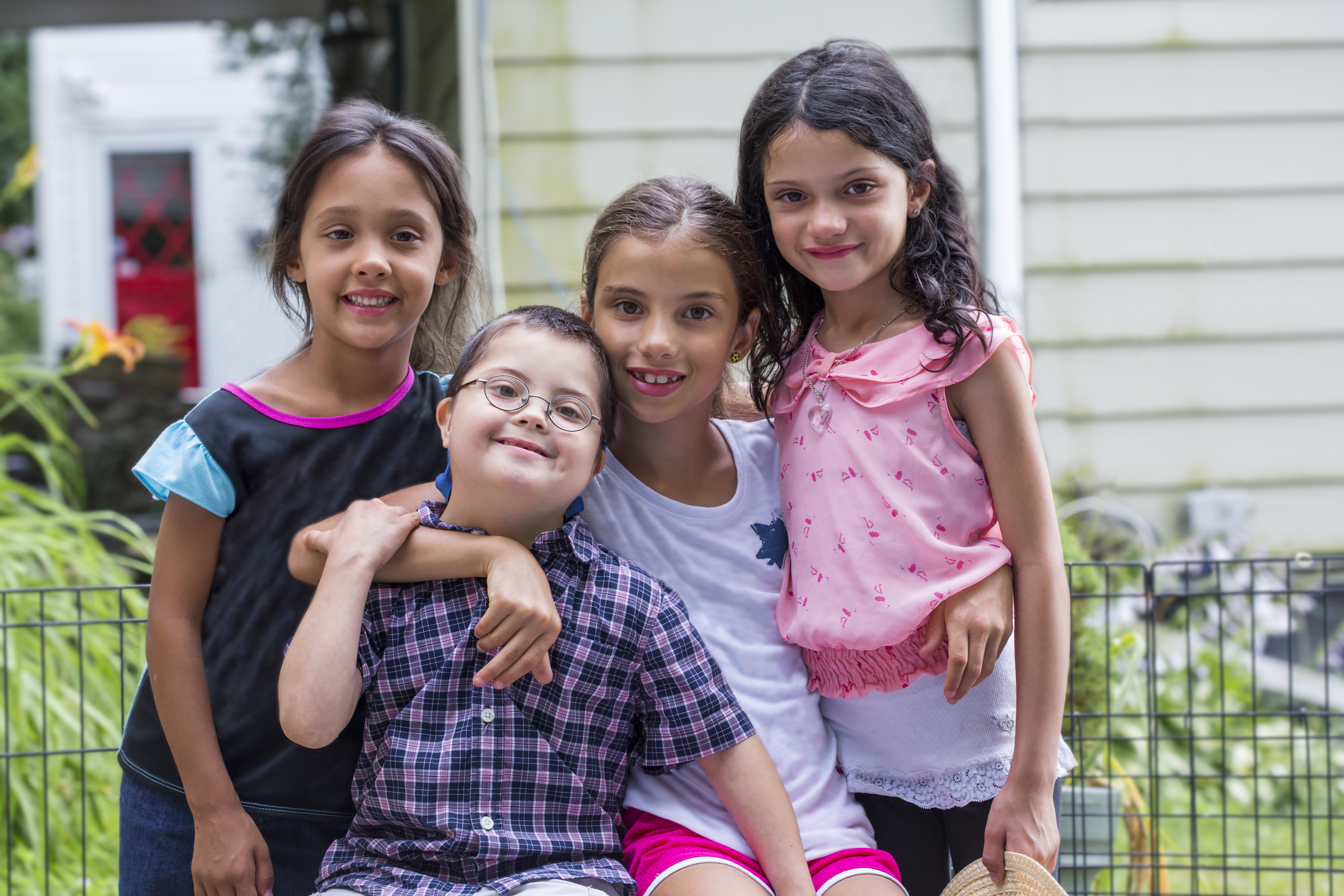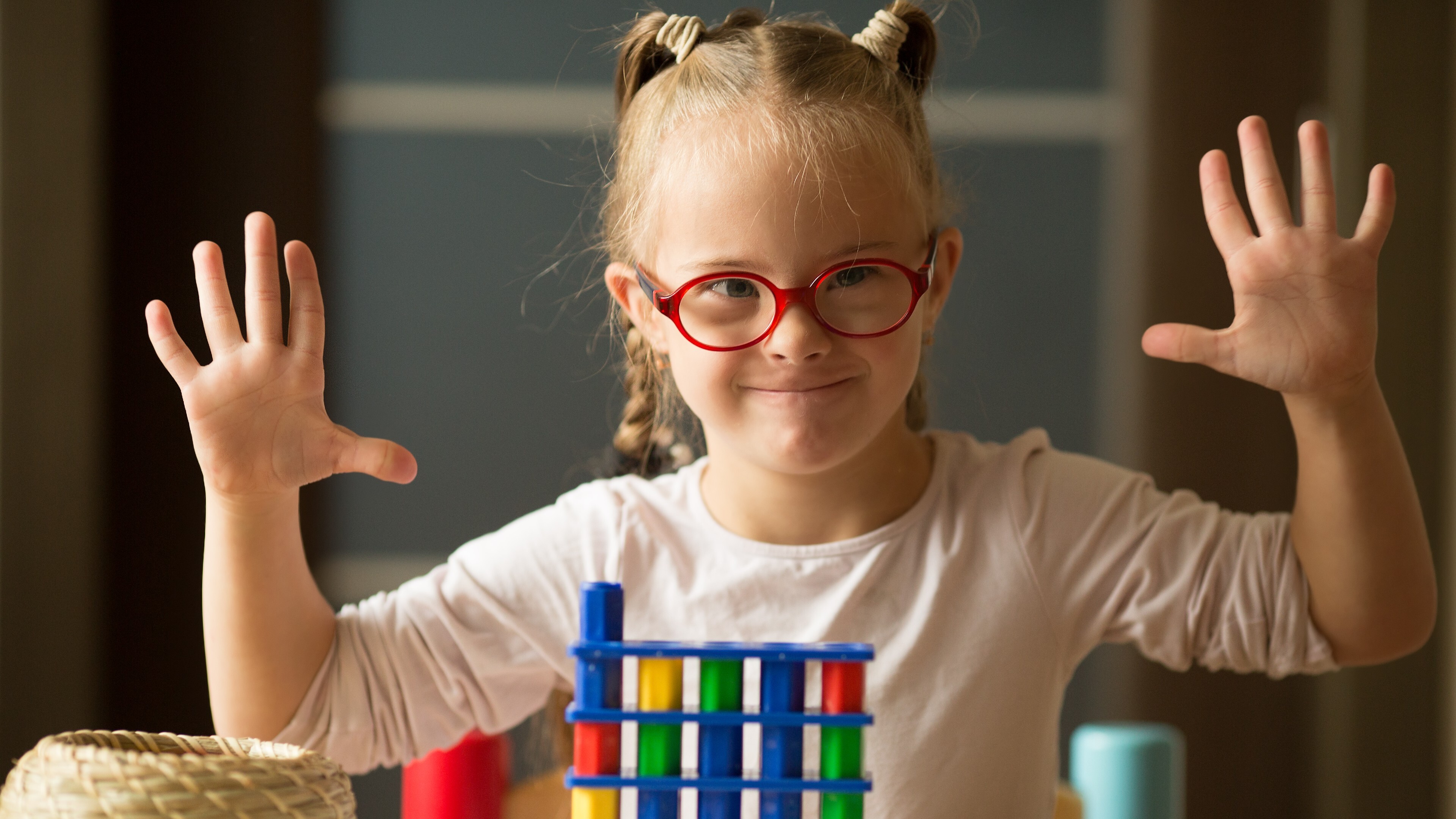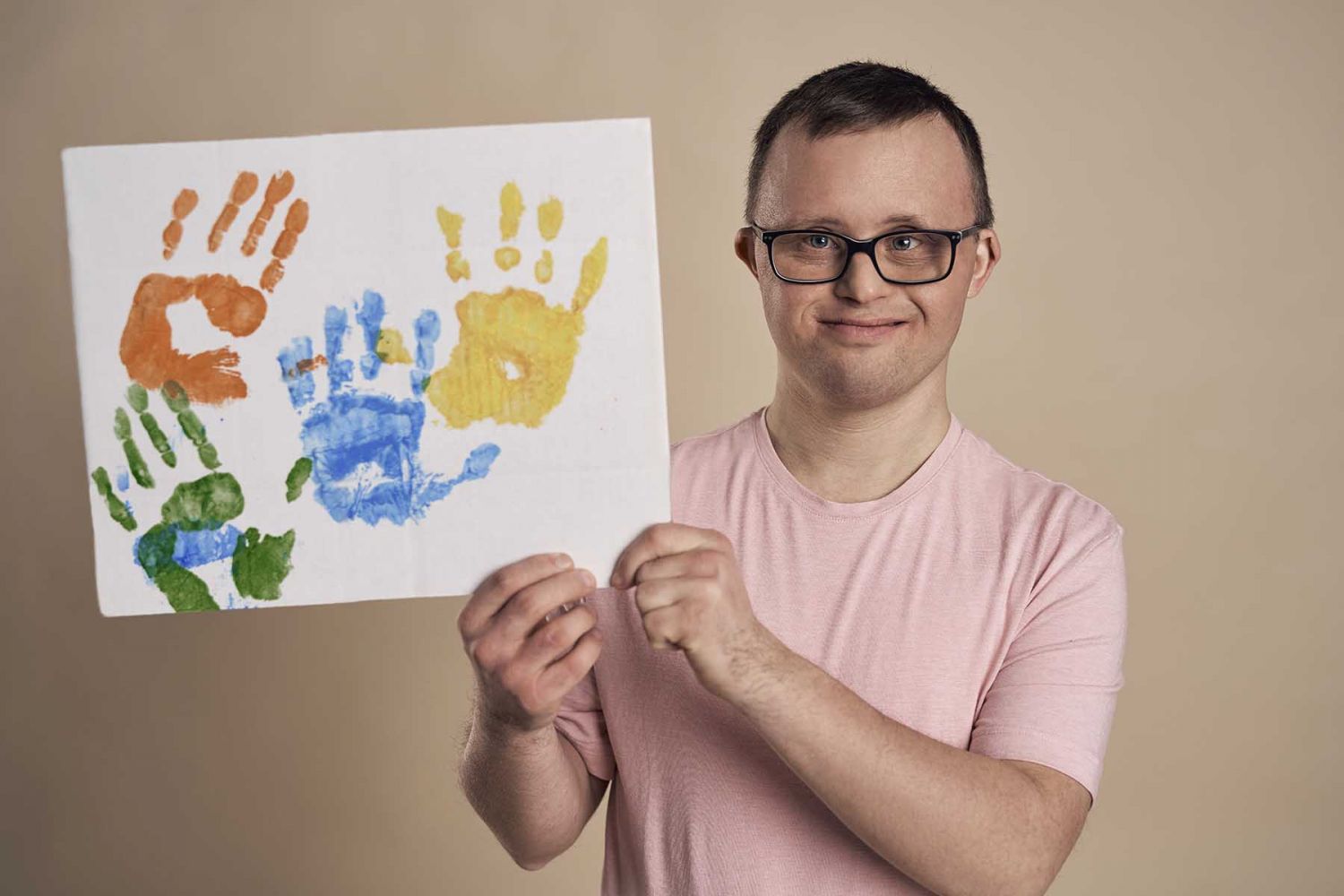It's a pretty unusual thought, isn't it? Thinking about a big wild cat, a powerful lion, having something like Down syndrome. People sometimes hear about animals with unique appearances or ways of being, and it gets them wondering. This idea, so, of a "down syndrome lion" has popped up in conversations and on the internet quite a bit, making many of us pause and think about the natural world in a slightly different way.
When we talk about conditions that affect how a living thing grows and develops, we often think of people. But, you know, it turns out that other creatures, from the smallest insects to the largest animals that walk on four legs, can also have genetic differences. These sorts of changes can happen to anyone, or anything, really, that has DNA. It’s just how life works sometimes, with all its variations. We see it in plants, too, so it's not just a human thing.
So, what does it mean for a creature as grand and as much a part of the wild as a lion to have such a condition? It makes us consider how these differences might show up in their appearance or how they get around. We also wonder about how they might live their lives within their group, or pride, as it is called for lions. It makes us think about compassion for all living things, even those who might need a bit more care or who just look a little bit different from what we expect, in a way.
- Openai Chatgpt Subscription Price Iran
- Aisha Sofet Naked
- Robert Paul Schoonover
- Buy Chatgpt Plus From Iran
- George Reeves And Christopher Reeves Related
Table of Contents
- What Does "Down Syndrome Lion" Really Mean?
- How Do We Know if an Animal Has a Genetic Difference?
- Life for a Lion with Unique Needs
- What Challenges Might a Down Syndrome Lion Face?
- Our Feelings About Animals with Differences
- Why Do We Care So Much About These Stories?
- Helping Animals Who Need a Little Extra Care
- What Can We Do to Support Animals Like This?
What Does "Down Syndrome Lion" Really Mean?
When people talk about a "down syndrome lion," they are usually referring to a lion that has certain physical characteristics that remind them of people who have Down syndrome. This might include features like a flatter face, eyes that slant upwards, or a body that appears a bit smaller than typical. It's important to remember that Down syndrome, as we know it, is a specific human condition caused by an extra copy of chromosome 21. Animals, including lions, have different numbers of chromosomes than humans, so they can't have the exact same condition. However, they can experience other genetic variations or developmental differences that might lead to similar physical traits. So, when you hear about a "down syndrome lion," it's more about how the lion looks to us, rather than it having the exact same medical condition as a person, you know.
There have been some instances where pictures of lions with very distinct facial structures have circulated, sparking these conversations. One lion, in particular, named Mogli, who lived in a zoo, gained a lot of attention because of his facial features. People saw his appearance and quickly made the connection to Down syndrome. It really goes to show how we try to make sense of things by comparing them to what we already understand. But for a "down syndrome lion," or any animal with these kinds of differences, the specific genetic reason might be something else entirely, or it could be a combination of factors, actually.
It's a way for us to put a name to something that seems a little bit out of the ordinary. The term "down syndrome lion" becomes a kind of shorthand for a lion with a noticeable physical difference. It highlights our human tendency to categorize and understand the world around us. Yet, it also brings up questions about how we view animals who might not fit the usual mold. This kind of discussion, so, can make us think more deeply about diversity in nature and how we react to it.
- Teach Me First Hq
- Pathivara Temple Dress Code
- Real Carly Jane Real Name
- Chatgpt Plus Subscription Purchase Iran
- Chatgpt Plus Subscription Iran How To Buy
How Do We Know if an Animal Has a Genetic Difference?
Figuring out if an animal has a genetic difference, like what people might call a "down syndrome lion," usually involves a few steps. Vets and animal scientists can take samples, like blood, to look at the animal's chromosomes. This is a bit like looking at a blueprint to see if all the parts are there and in the right order. If there's an extra chromosome, or a piece missing, or a change in its structure, that would point to a genetic difference. This kind of testing gives us a clearer picture of what's happening inside the animal's body, as a matter of fact.
Beyond the lab tests, people who spend a lot of time with animals, like zoo keepers or wildlife experts, often notice physical signs. They might see a lion with a face that looks different, or perhaps it moves in a way that isn't typical for its kind. Sometimes, these physical signs are the first clue that something is a bit unique about the animal's development. It's about careful observation over time. For a "down syndrome lion," these observations are what first catch people's eye, leading to all the talk and curiosity, you know.
It’s also about understanding animal behavior. An animal with a genetic difference might act a little differently too. They might have trouble keeping up with their group, or they might learn things at a slower pace. These behavioral cues, when put together with physical signs and any genetic testing, help paint a full picture. It's a bit like putting together pieces of a puzzle to really get what's going on. So, for something like a "down syndrome lion," it's a mix of looking closely and, if possible, doing some science work, too.
Life for a Lion with Unique Needs
A lion with unique needs, perhaps one that someone might label a "down syndrome lion," would likely face a set of challenges that other lions might not. In the wild, life is incredibly tough. Lions need to be strong, quick, and very sharp to hunt for food, protect themselves, and be part of their pride. If a lion has physical differences that make it harder to run, jump, or even see properly, its chances of surviving on its own would be very, very slim. It's a harsh truth, but nature often favors those who are best suited to their environment, you see.
In a protected place, like a wildlife sanctuary or a zoo, a lion with special needs has a much better chance. Caretakers can make sure it gets enough food, that it's safe from harm, and that it receives any medical attention it might need. They can create an environment that helps the lion live its best life, even with its differences. This might mean making sure its enclosure is easy to move around in, or that its food is prepared in a way that's easy to eat. It's about providing a lot of extra support and understanding, as a matter of fact.
The social side of things is also a big deal for a lion. Lions live in groups, and there's a certain order to how they interact. If a "down syndrome lion" has behavioral differences or struggles to communicate in the usual lion ways, it might find it hard to fit in with the pride. In a zoo, caretakers can carefully introduce it to other lions who are gentle and accepting, helping it to form connections. It's all about making sure these amazing animals get to live a life that's as full and comfortable as possible, despite their individual circumstances, basically.
What Challenges Might a Down Syndrome Lion Face?
A lion with physical or developmental differences, like one people might call a "down syndrome lion," could have a number of things that make life harder. For one, getting food could be a real struggle. Hunting takes a lot of speed, coordination, and strength. If a lion has weaker muscles or trouble with its balance, catching prey would be incredibly difficult. This means it would depend on others to provide for it, which is something that doesn't happen often in the wild for adult lions, obviously.
Staying safe is another big challenge. Lions, even the biggest ones, can get hurt. If a "down syndrome lion" moves slowly or can't react quickly to danger, it might be more open to attacks from other animals or even from other lions who see it as weak. It's about being able to defend itself and escape from tricky spots. Its senses, like sight or hearing, might also not be as sharp, making it harder to spot trouble coming. These are all things that add up to a lot of extra risk, you know.
Then there's the health side of things. Genetic differences can sometimes come with other health issues, like heart problems or a weaker immune system, which means they might get sick more often. This would require ongoing care, which is something wild animals just don't get. So, a "down syndrome lion" would really need a lot of looking after to stay well. It highlights how much support these animals would need to live a good life, pretty much.
Our Feelings About Animals with Differences
When we see an animal with a noticeable difference, like a lion that looks a bit unique, it often stirs up a lot of feelings in us. There's usually a sense of wonder, perhaps even a bit of sadness, and definitely a lot of curiosity. We see their vulnerability and our natural human response is often to feel protective and compassionate. It’s a powerful connection we make, seeing a creature that might need a little extra kindness in a world that can be quite harsh. This feeling is a good one, as it shows our capacity for empathy towards all living things, really.
Sometimes, too, people project human feelings and ideas onto animals. When we see a "down syndrome lion," for example, we might imagine its struggles or its inner life based on what we know about people with similar conditions. This isn't always accurate, because animals experience the world in their own ways, but it comes from a place of caring. It helps us relate to them on a deeper level, even if our understanding isn't perfect. This connection can make us want to learn more and perhaps even help out, in a way.
These stories also make us think about what it means to be "normal" or "perfect." A lion with a difference challenges our usual ideas of what a lion should look like or how it should behave. It reminds us that variety is a natural part of life, in all its forms. It encourages us to look beyond appearances and to appreciate the individual spirit of each creature. So, seeing a "down syndrome lion" can actually open our hearts and minds to a broader view of the living world, basically.
Why Do We Care So Much About These Stories?
We care about stories of animals with differences, like a "down syndrome lion," for a bunch of reasons. For one, it speaks to our shared experience of life. We all know what it feels like to be a little bit different sometimes, or to face something tough. So, when we see an animal going through something similar, it creates a bond, a feeling of connection. It's a reminder that life, in all its forms, has its ups and downs, and that every living thing has its own story, you know.
There's also a simple human desire to understand. When something looks or acts in a way that's not what we expect, our brains naturally want to figure it out. We ask questions: Why does it look like that? How does it live? What does it mean for its future? This curiosity drives us to learn more about the natural world and its many variations. So, a "down syndrome lion" sparks that inquisitive part of us, making us want to dig a little deeper, as a matter of fact.
And then there's the sheer wonder of it all. Nature is full of surprises, and sometimes those surprises are living beings that defy our expectations. Seeing a creature that is unique reminds us of the incredible diversity and resilience of life on Earth. It makes us appreciate the beauty in all forms, even those that might be considered outside the norm. These stories, too, often come with a message of hope and kindness, showing how people can step in to help those who need it most, which feels good to hear, right?
Helping Animals Who Need a Little Extra Care
When an animal, like a "down syndrome lion," needs a little extra care, there are special places and people who step up to help. Zoos and wildlife sanctuaries play a huge part in this. They have trained vets and animal caregivers who know how to look after creatures with unique health needs. They can provide special diets, medicines, and environments that make life easier for these animals. It's about giving them a chance to live a comfortable and dignified life, even if they can't make it on their own in the wild, obviously.
These places also do a lot of good by teaching people. When visitors see an animal with a difference, it opens up conversations about genetics, animal welfare, and compassion. It helps people understand that every animal, no matter how it looks, deserves respect and care. This education is super important because it helps us all become more thoughtful about the living world around us. So, seeing a "down syndrome lion" in a safe setting can be a powerful learning experience for everyone involved, basically.
Beyond the big institutions, there are also many smaller groups and individuals who dedicate their time and effort to helping animals with special needs. They might rescue injured wildlife, or take in pets who need extra attention. It’s a testament to the kindness that exists in the world, showing how much people are willing to give to make a difference for creatures who are vulnerable. This collective effort ensures that animals who are a bit different get the love and support they deserve, and stuff.
What Can We Do to Support Animals Like This?
If you feel moved by the stories of animals with special needs, like the idea of a "down syndrome lion," there are some pretty straightforward ways you can help. One good way is to support reputable zoos and wildlife sanctuaries. These places often rely on donations to do their amazing work. Your contribution, even a small one, can help pay for food, medical supplies, and the specialized care that these animals require. It's a direct way to make a difference in their lives, you know.
Another thing you can do is spread awareness. Talk to your friends and family about the importance of animal welfare and the challenges faced by animals with genetic differences. Share accurate information from trusted sources. By helping others understand, you contribute to a more compassionate and informed community. It's about building a collective sense of responsibility for all creatures, as a matter of fact.
Finally, consider learning more about animal biology and genetics. The more we understand how life works, the better equipped we are to appreciate its diversity and to help those who need it most. Reading books, watching documentaries, or even visiting local nature centers can deepen your knowledge. Every bit of understanding helps us to be better caretakers of our planet and all the wonderful beings who share it with us. So, supporting animals like a "down syndrome lion" can start with a simple act of learning or giving, too.
This discussion has touched on the interesting idea of a "down syndrome lion," exploring what that term might mean when applied to animals. We looked at how genetic differences can show up in creatures beyond humans and the ways we might come to know about them. The piece considered the various hurdles a lion with special needs might encounter, both in the wild and in a protected environment. It also thought about why these kinds of stories really resonate with us, stirring up feelings of empathy and wonder. Finally, we went over some practical ways people can offer their support to animals who require a bit of extra attention and kindness.



